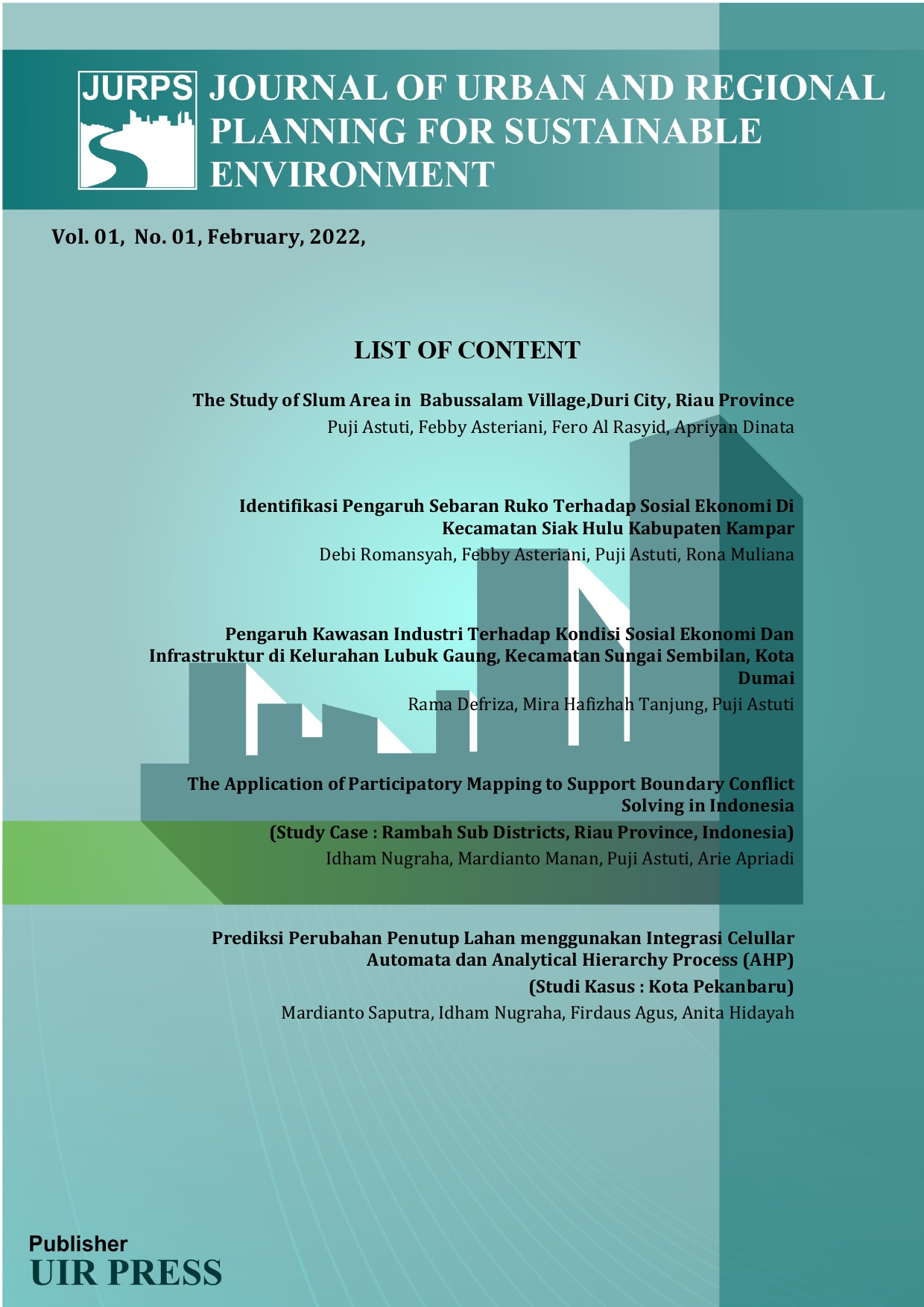The Application of Participatory Mapping to Support Boundary Conflict Solving in Indonesia (Study Case : Rambah Sub Districts, Riau Province, Indonesia)
Keywords:
Participatory Mapping, Village, Boundary, GIS, Village DevelopmentAbstract
Rambah is one of the sub-districts located in Riau Province that consists of 14 villages. Nowadays, the main issue for the government is related to the boundary that was occurred because of the overlapped boundary between the villages. This paper purposed was to determine the village's boundary in Rambah Sub-Districts using the use of remote sensing imagery (Quickbird imagery), Geographic Information System (GIS) and participatory mapping. The participatory mapping was conducted involving all related stakeholder such as the district's government to the village apparatus and local community. The guidance for the participatory mapping was oriented to the PERMENDAGRI (Minister of Home Affair Regulation) No. 45 the year of 2016. The results of this research were the comprehensive mapping of Rambah Sub Districts shown by the 1:5.000 map. This results can be used as a key for the spatial regulation to supports village development in term of village boundary and village funds.
Downloads
References
Fardani (2019) Participatory Mapping Solutio for Village Potential and Boundary, PROCEEDING The 9th International Conference of Rural Research and Planning Group, 194-208
North Jersey Transportation Planning Authority, Participatory Mapping. https://www.njtpa.org/NJTPA/media/Documents/Get-Involved/Public-Involvement/Public-Engagement Toolkit/Tips%20for%20Planning%20and%20How%20To/Participatory Mapping.pdf Accessed on 17 August 2019
Gessa Stefano Di (2008) Participatory Mapping as a tool for Empowerment Experiences and lessons learned from the ILC network. International Land Concilidation
I N Sunarta, T Kusmawati, J Hutauruk, N K D A Lestari (2017). Determining Banjar Boundary and Tourism Planning using Participatory Mapping (Case Study in Pesinggahan Village, Klungkung Regency, Bali, Indonesia) The 5th Geoinformation Science Symposium 2017. doi :10.1088/1755-1315/98/1/012045
Jong Tallo, Amandus (2016). Participatory mapping Solution Village Development Karengas in a Suistainable Way. Seminar Nasional Peran Geospasial dalam Membingkai NKRI. Cibinong, Indonesia.
Sulistyawan, B.S., Verweij, P.A., Boot, R.G.A., Purwanti, B., Rumbiak, W., Wattimena, M.C., Rahawarin, P. and Adzan, G., 2018. Integrating participatory GIS into spatial planning regulation: The case of Merauke District, Papua, Indonesia. International Journal of the Commons, 12(1), pp.26–59. DOI: http://doi.org/10.18352/ijc.759






